Complete Projects
Beaver Creek's Sage Grouse Recovery
This 6,000 acre project represents some of the highest potential sage-grouse habitat in Crook County. Years of extreme run off, western juniper expansion, noxious weed invasion, and poor land management practices have all contributed to the degradation of the Beaver Creek watershed.
Watershed improvements which have resulted from this project are improved water quality, increased late season flows, reduced risk of catastrophic wildfire, and improved fish and wildlife habitat. Off stream water development combined with improved forage conditions have improved grazing distribution and will continue to contribute to the improvements in riparian and stream conditions.
Landowners are excited about the progress that has been made and are eager to continue to build upon the project.
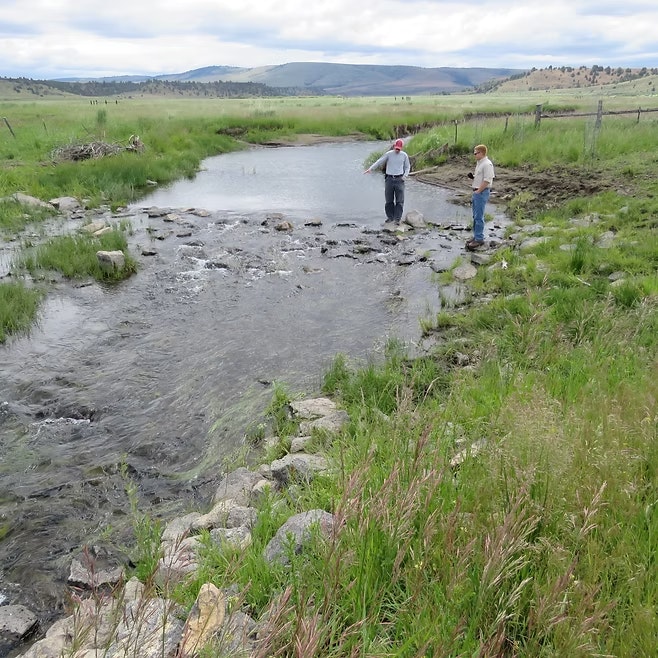
Nine channel spanning rock structures will increase channel roughness and pool habitat to enhance habitat for redband trout.
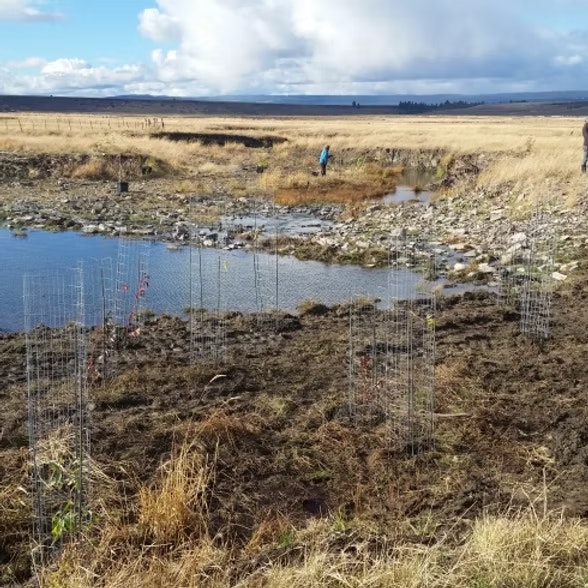
We planted a mix of trees and shrubs to provide shade and reduce erosion during high flows.
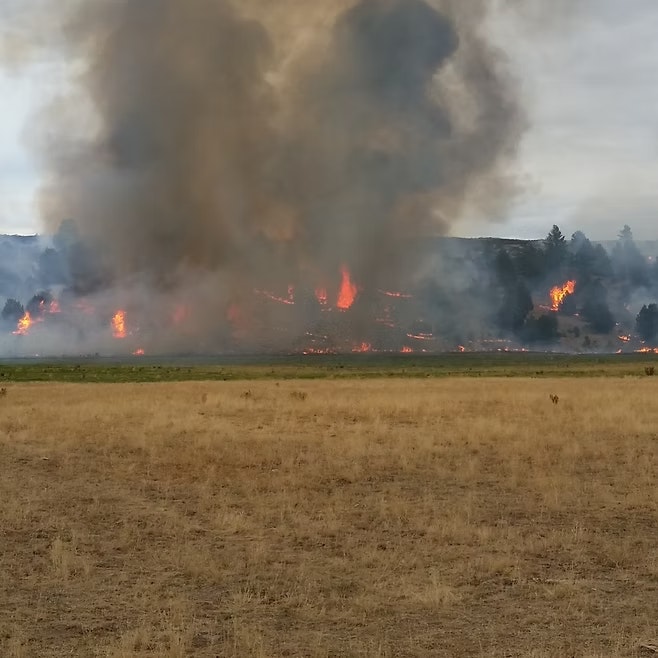
Burning juniper can be a cost effective way to remove large, dense stands of juniper trees.
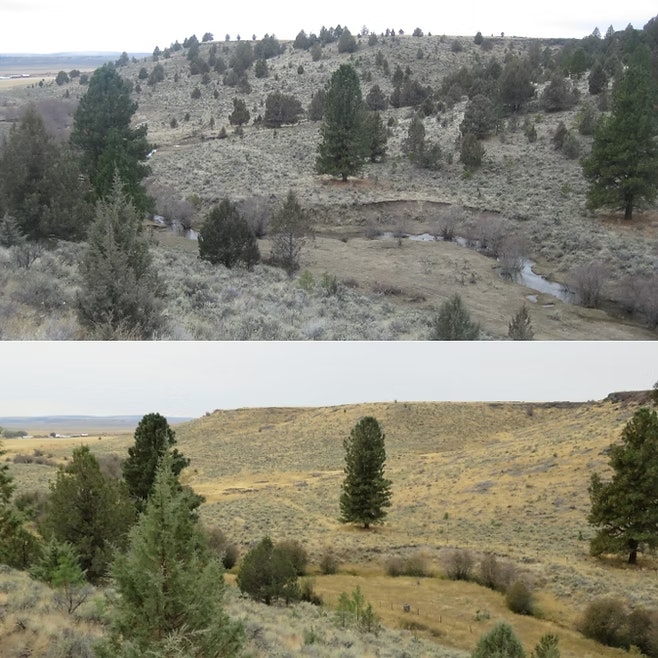
Look at the before and after picture and see how the junipers have been removed from the hillside.
Hidden Falls Recovery Project
The Hidden Falls Recovery Project was intended to improve fish and wildlife habitat in the Ochoco Creek Watershed just East of Prineville. The project implemented restoration activities improving fish habitat, upgrading livestock distribution, and reducing the invasive noxious weeds within the riparian area.
The project resulted in the installation of over 16,000 feet of riparian fencing, three off-site livestock watering systems, reconnection of backwater areas to creek for fish refuge, treatment of over 5 acres of noxious weeds, seeding of over a 10 acre area, and planting 6 different varieties of riparian plants. The practices improved and created spawning beds, riffle structures, pools, and bank stability on 1.5 miles of Ochoco Creek, a site where PGE releases steelhead fry and smolt every year. This project is also used as a demonstration and education site for grade-schoolers learning about natural resource processes and restoration.
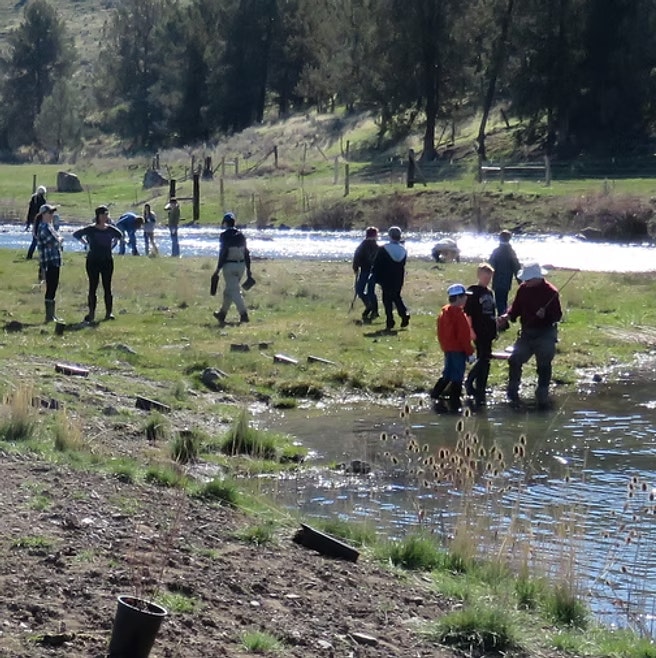
Children from local schools assisted us in planting riparian plants and learned about restoration.
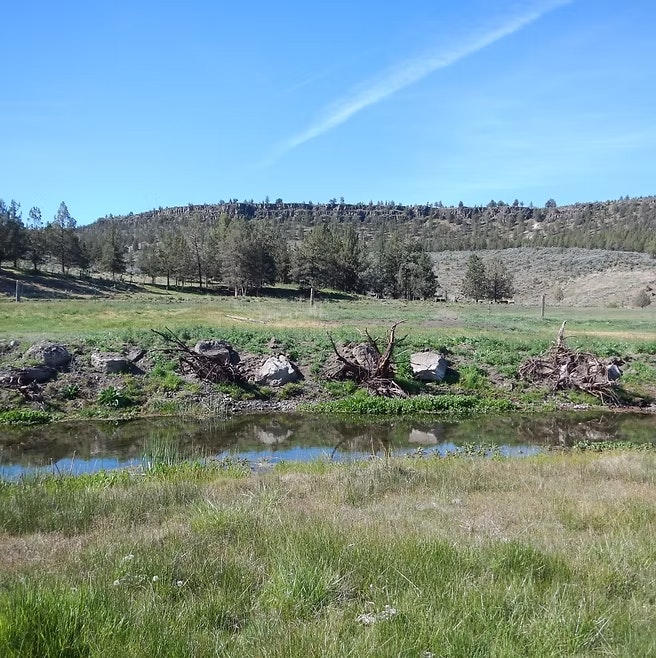
Adding juniper stumps and large wood to the outside bends of the creek prevent erosion and create instream refugia for fish and prevent excessive scour.
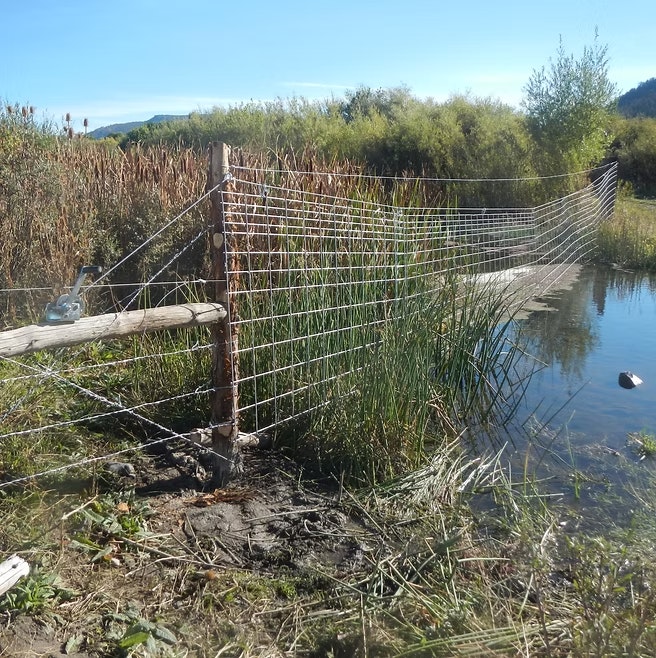
Fences are installed along the banks of the creek in order to protect the vegetation from grazing.
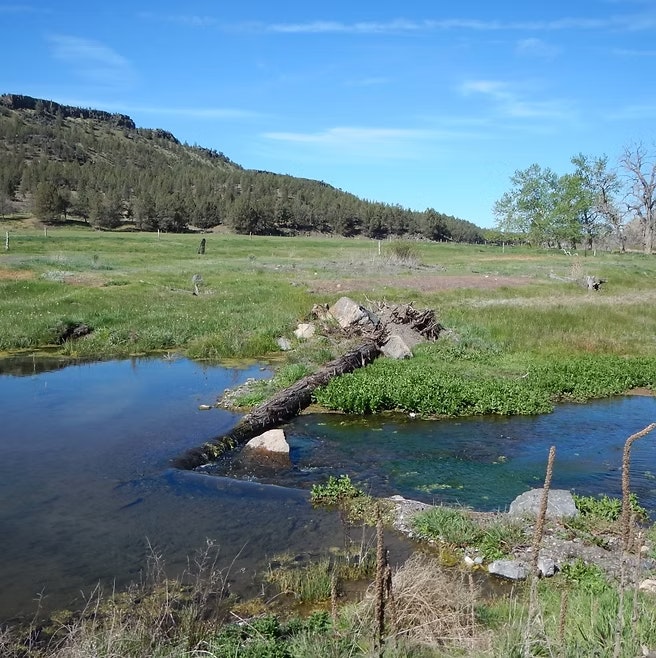
Installing large wood is a great way to initiate floodplain connectivity.
Lawson Creek Redband and Wildlife Recovery
The Lawson Creek drainage is located within the Upper Ochoco Creek Watershed and is an influential redband trout tributary of the Lower Crooked River. This project addressed 8 stream miles of degraded redband trout habitat and associated mule deer and rocky mountain elk winter range. ODFW has identified Lawson Creek, together with neighboring Mill and Marks Creeks, as a significant redband spawning and rearing site.
The project team, partnering with ODFW, NRCS, US Forest Service and The Crooked River Watershed Council, implemented restoration efforts that included; instream habitat recovery, bank stabilization, increased channel complexity, riparian and native bunchgrass reintroduction, western juniper treatment, and off-site watering developments in order to restore this landscape and waterway to a fully functioning ecosystem. The landowners involved contributed a significant amount of in-kind materials, labor, and project management required to make this habitat recovery successful.
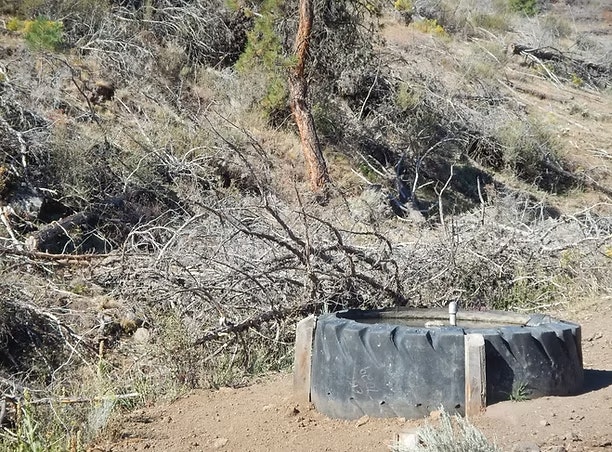
Improving a spring to create a reliable source of water away from the creek banks benefits water quality and range health.
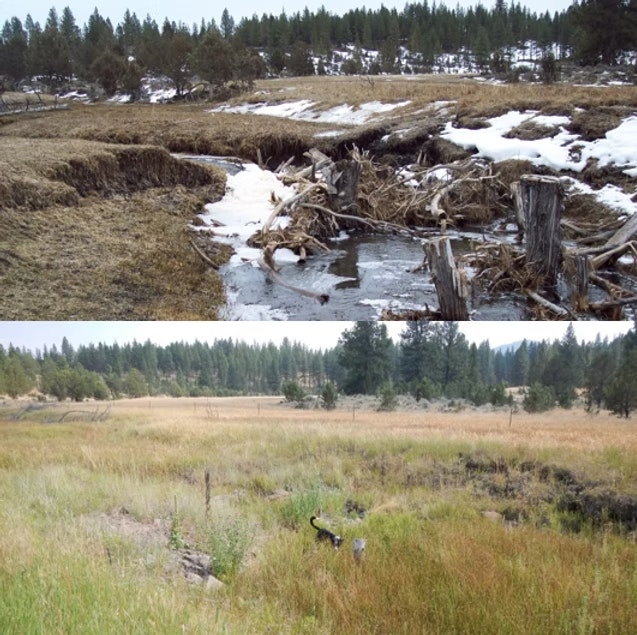
Check out the way the meadow species are recovering in this before and after set of photos. Headcuts can be stabilized using logs and rocks.